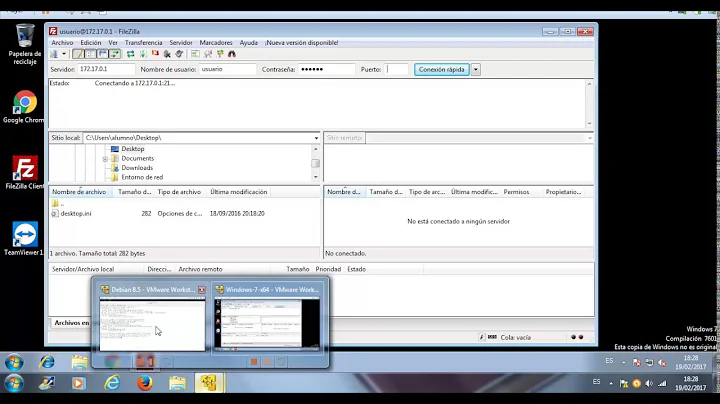iptables input, output, forward
Solution 1
INPUT: packets coming from the network and going to your server.
OUTPUT: packets originating from your server and going to the network.
FORWARD: packets forwarded by your server, if/when it acts as a router between different networks.
In order to allow SSH access to your server, you have to accept the traffic in the INPUT chain.
Solution 2
As was explained correctly:
INPUT : incoming packets, i.e. packets with the host as destination IP
OUTPUT : outgoing packets, i.e. packets with the host as source IP
FORWARD : packets where neither source ip nor destination ip is the host’s IP
As a side note, talking about the host’s IP is an abuse of language. In reality, the IP belongs to the network interface, not the host. Indeed many hosts have several network interfaces (e.g. wifi radio, ethernet port), each with its own IP.
It was incorrectly stated however that to allow ssh you only need to add a rule that allow incoming ssh packets. This is incorrect, as you can easily see yourself: you’ll allow ssh packets but your firewall will drop (or reject - depending on your default settings) anything that you send back in response to that ssh connection.
The trick is to allow incoming ssh connection and communication, and to allow outgoing ssh communication (but not connection, if you do not want your host to make outgoing ssh connection).
Practically, you set this up this way in iptables:
iptables -A INPUT -p tcp --dport 22 -m state --state NEW,ESTABLISHED -j ACCEPT
iptables -A OUTPUT -p tcp --sport 22 -m state --state ESTABLISHED -j ACCEPT
(With a default behaviour to drop or reject)
Note that on many clients, you actually want the opposite setting : allow new and established on the OUTPUT (to allow yourself connecting to the outside world), and allow established only on the INPUT (to protect yourself against unwanted connection attempt).
PS: I am playing the necromancer here, but google redirects to this (partially) incorrect accepted answer, so I thought it’d be worth correcting it.
Solution 3
You only need the first rule.
- INPUT: filters packets destined for your server
- OUTPUT: filters packets originating from your server
- FORWARD: filters packets to server accessible by another NIC
Related videos on Youtube
bash-
Updated on September 18, 2022Comments
-
bash- over 1 year
OKay I started delving into networking yesterday and just setup my ubuntu server so I am a complete noob.
I want to ask what are the input/out/forward chains in iptables? Say I want to open port 22 for ssh access, would I need to use all 3 of these? or just one of two of them?
iptables -A INPUT -p tcp --dport 22 -j ACCEPT iptables -A OUTPUT -p tcp --dport 22 -j ACCEPT iptables -A FORWARD -p tcp --dport 22 -j ACCEPTthanks!
-
MadHatter over 12 yearsAnd, in fairness, you also need to allow the return-half packets to pass through the OUTPUT chain.
-
bash- over 12 yearsI see. So in the case if I want to set up a postgresql db server I would need to open up the
INPUTandOUTPUTin the iptables as packets can come in and out?


![IPTABLES [PART-1] : "UNDERSTANDING THE CONCEPT"](https://i.ytimg.com/vi/vbhr4csDeI4/hq720.jpg?sqp=-oaymwEcCNAFEJQDSFXyq4qpAw4IARUAAIhCGAFwAcABBg==&rs=AOn4CLBovKYd5heeT0eQFP4enqBJ_GCa1Q)

